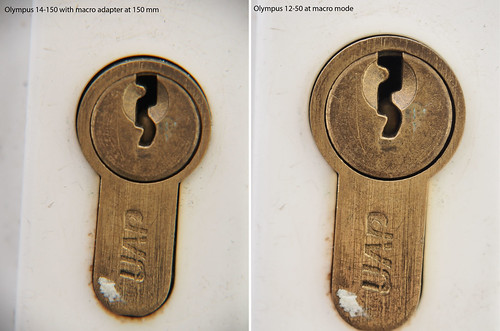EM5 upgrade
The promise of the micro four thirds format (micro43), about which I have written [before]({filename}/111222-ParisShares-my olympus pen experiment.md), is good quality in a portable package.
Here is an asterisk on quality: great photographs are mostly not about technical quality, which is a matter of fashion, opinion, conditioning and procrastination from things that matter. Quality is mostly a distraction, especially in a world where mobile phones compete for quality with pocket cameras of a few years back.
Asterisk two on quality: Unfortunately knowledge that quality for which one used to pay a premium for is now the standard does not make people happy with what is currently available. The expensive option will always have demand some of which is just a consequence of having two options.
Anyway. when I first heard about the micro43 format I expected a compromise between low quality and the specific advantages of the small format. In other words I was expecting quality to be a distraction.
The EM5 quality is not a distraction
The point at which one decides that quality is good enough is tricky, because 'good enough' shifts with time.
After considering all the above about quality, I am happy to say that the EM5 achieves good enough quality (unlike the EP3) so that the user only needs to worry about the art.
Micro43 strengths
In this respect, the insights on the strengths of the micro43 format are as relevant as they were when I first wrote about the format 6 months ago:
- The camera is portable, almost pocketable, and this includes the lenses.
- Subjects are not intimidated to be photographed or to photograph you if they are given the camera.
- You can compose from many viewing angles without suffering a focus speed penalty, as with dSLR live view.
- Video is easier to shoot than a dSLR.
- Olympus-only, you can take advantage of image stabilisation even with prime lenses and shoot in the dark handheld.
- Olympus-only, there are in-camera filter effects, highlight/shadow preview before shooting and the super control panel, which makes most settings accessible for easy changing from a single menu.

Cartoon filter, new to the EM5.

Black and white dramatic tone.
The EP3 may be better
Actually if it was just for the above, the Olympus EP3 is better, except for the low light ability and more limited dynamic range (i.e. quality). In fact I appreciate the EP3 more now, as it could become very small, or larger with add-ons depending on needs.
For example I could put my EP3 in my trousers pocket and go dancing in a club. It required slightly lose trousers, but it worked. The EM5, with its bump and rubber eyepiece on the top does not fit in trousers, and is difficult to take out of bigger pockets (like a coat pocket).
Similarly, if I need a flash I now have to carry one. Yes, the included clip- on is small, but using it adds the worry of keeping track of 2 ports on the camera where it connects, one port on the flash and a flash case, all of which contribute to the weather sealing of the camera. I think the consequence is that I will often not be bothering with the flash, which is a loss compared to the EP3. Commanding an external flash will also be happening less, because there would be even more parts to worry about, especially outdoors.
The EM5 is a different class of camera
The advantages of the EM5 that compensate for the lack of portability compared to a PEN, are in the combination of new technologies it incorporates.
The image quality is better, and very impressive: I think it surpasses the last dSLR I owned, the Nikon D90. It probably does not beat today's dSLRs, but it is certainly good enough for most situations, and I would need to look hard to find differences worthy of carrying a much bigger camera. And lenses.
Another big asset of the EM5 is the stabilisation technology it uses. The sensor is suspended in air so that it can compensate for movement in 5 axes. It works great, and it is used in every picture you take. It is really good, and works in video too.
More minor things for me are the weatherproofing which will hopefully prove useful (I live in Scotland after all). There is also an external grip which I am waiting to receive as it was part of a UK promotion for early adopters by Olympus.
The other big difference from the EP3 is the flexibility of the composition tools available in the EM5, that are the primary reason of the physical differences between the two cameras. I use both the tilting screen and the viewfinder a lot, and I would miss them if I returned to the EP3. The touchscreen, which allows to touch and shoot, is also something I use a lot and works great, especially for macro shooting.
The autofocus is fast, the shutter is quiet and there is a 9 FPS shooting speed all of which I am quickly getting used to and would miss in another camera.

Flying swallows from multiple exposures combined into one. The 9fps shooting helped capture them.
I also like the 12-50 lens which came as a kit lens. Its strength is its flexibility. It goes from very wide (24 mm equivalent) to a moderate zoom (100 mm equivalent), it has a respectable macro mode, it is weatherproof and has an electronic zoom mechanism to use for video. Its biggest downside is it is too big. However it is ideal for a hike or as a general purpose lens, which is the idea of a kit lens, and at the kit price it was a bargain.

The macro mode of the 12-50 lens does not offer a 1:1 magnification, but it is similar to the 14-150 lens combined with the Olympus macro adaptor, and is a good general purpose macro lens. The photos are at the closest focusing distance of either setup.
So while individually none of the EM5 strengths would justify an upgrade from the EP3, their combination makes for a different machine which belongs to its own class, and was worth the upgrade price to me.
EM5 problems
I don't think there is a big problem that would stop me from buying the camera. Some are annoyances that you have to adapt to, others could be improved in a future model or a firmware update.
Annoyances include the on/off switch position, the small buttons and the complicated menu. I am already getting used to these and I expect they will become even less annoying with time.
Some obvious potential improvements:
- The ability to program all arrow buttons.
- An in-camera panorama mode (which is missing).
- An easily accessible recall setting for multiple presets (from mode dial or by adding them to the multi function buttons, for example).
Micro43 problems
There are some things about the micro43 system that may bother you. While some may catch up with dSLRs as image quality has, others are part of using a smaller system. I view these as something insignificant compared to the flexibility allowed by the format.
The greatest constraint of the micro43 format is the achievable depth of field, which will always be less narrow than that of full frame cameras as a consequence of physics. A broad depth of field is not always a problem, but the limited range limits photographic options. It is still possible to achieve out-of-focus backgrounds using specialised lenses like the Olympus 45 mm.
Still if all photography you do is about bokeh, then you should consider a different system. For me it is good enough.
Tracking auto focus is still not fast enough. It keeps improving and at some point it might be as good as a dSLR. However it is not there yet, so micro43 is not ready for sports photography.
Battery life is lower than a dSLR. This is a consequence of smaller batteries, and the fact that the camera constantly consumes power while on. One of the things I liked most about dSLRs was they could be permanently turned on, and whenever something interesting happened you could just shoot. It is a different shooting experience to have to turn the camera on after not using it for a while. Still, I prefer carrying extra batteries than carrying a system double the size/weight.
Summary
When I sold my Nikon dSLR system for an Olympus micro43 system I called it an experiment. I was fed up with the bulk and geekiness of dSLRs which imposed assumptions for what I have to be with such a camera. I knew there were important compromises I had to make and that I would still miss my kit in some events such as action and low light. I captured this uncertainty by asking whether I would use the EP3 at my wedding. Unlike the EP3, for the EM5 the answer is that I would be willing to try, even though I know it still is not a full replacement for a dSLR.
I am not asking it to be. In fact the reasons I moved away from dSLRs still hold and I am happy I did.
I am at the point of not looking back. I see too many clear advantages in micro43, so I have to work around the disadvantages rather than consider an alternative.
Just as I did when I ditched my Windows PC for a Mac.
